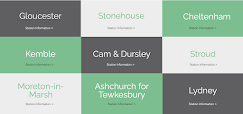"From Baked Beans to Bottom Burps: The Process of Human Flatulence" Infographic Brief
Prior to creating my infographic, I must familiarise myself with this area of scientific information as it is something I do not know much about. This will be crucial for an effective and informative design.
What causes flatulence?
- "Flatulence is a normal process, which occurs when the bacteria in the large intestine (colon) metabolise things in our diet that we can't metabolise" - S, Giddens. 2020)
- Factors such as time of day, pregnancy/menstruation and medical conditions including diseases of the digestive tract and intolerances can affect the amount of flactulence at any given moment.
- The majority of gasses passed via flatulence go unnoticed as they're odourless, such as nitrogen, oxygen and carbon dioxide. However, a small portion of hydrogen sulphide can be present which is the waste of microbes that help break down the 'undigestible', creating a 'rotten egg' smell.
- Other factors that contributing to an odour include compounds that are 'byproducts' of meat digested and whether feces is present in the rectum at the time.
Why are baked beans associated with flatulence?
- Beans are known for being hard to digest due to their complex carbohydrate structure which contains hard-to-digest sugars that can cause gas and cramping. The body does not have the enzymes that can break them down - bacteria in the gut does this instead, giving off gas in the progress.
- Beans are also loaded with healthy proteins and fibre.
What is the large intestine/how does food reach here?
- To reach the colon, food must first travel through the majority of the 'digestive system'
- Mouth<oesophagus>stomach>small intestine>accessory organs>large intestine>waste.
- Most nutrients are absorbed in the small intestine - anything hard-to-digest that's left is moved into the colon (5-7ft long muscular tube, responsible for processing waste. Takes 36 hours on average for waste to get through & exit. Breaks down and absorbs remaining nutrients whilst simultaneously protecting us from bacteria and potentially harmful substances).
What steps do I have to illustrate?
Small illustration of how food reaches the colon from the mouth - large colon (food moving through colon - maybe baked beans as something recognisable, gas particles being given off - and exit)
To develop my work so far, I have looked into how I can create a friendly and inviting design whilst dealing with complicated and also crude subjects that I could not just illustrate as this would be an instant turn-away. Currently, I am unhappy with how my design is looking as I feel that it needs a solid structured-layout which it currently lacks, especially without a background. Despite this, I really like the typography I created by hand and how the title adds an element of fun amongst the body anatomy. I also edited the anatomy's layout to show a clearer bodily flow, also relying on the recognisable shapes of each muscle to help the audience understand the process of flatulence.
For my final design, I decided to remove the 'wiggly' pink block and replace the entire design excluding a frame with this colour. Doing this alone added a much more sophisticated structure to the poster. I also played around with spacing to create more balance in design, especially around the baked bean-spoon illustration. Adding the larger block of colour also makes it feel as if it is inside the body, with the gas being released into the outside. Whilst still having a child-friendly feel, this change has made my design feel like a much more trust-worthy source instead of as something you would look past like my previous layouts.







Comments
Post a Comment